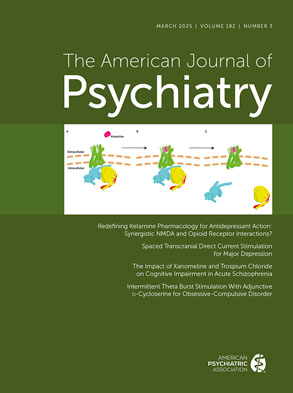To the Editor: Dr. Sareen and colleagues raise several important points regarding the abuse liability of benzodiazepine receptor agonists and the relevance of this liability for the treatment of insomnia. We strongly agree with their call for longitudinal studies to assess the risk factors for benzodiazepine receptor agonist abuse and dependence and the need to carefully weigh the risks and benefits of long-term sedative medications in the treatment of insomnia patients. However, we think it is also important to point out the limitations of extrapolating from epidemiological data to clinical practice in this area. The data in the article by Goodwin and Hasin (2002) illustrate some of these problems.
First, the analyses confound different types of misuse. Thus, misuse was defined as either using a sedative without a prescription or using more than the amount prescribed by a physician. The prevalence of each type of misuse is not stated, but we would argue that these represent two different phenomena. Nonprescribed use of sedatives by some individuals bears little relevance to the risk of sedatives prescribed to another group of individuals. Second, the analyses do not consider the indication or diagnosis of individuals taking hypnotics. This is important because most patients with insomnia may have different risks than patients with anxiety or depressive disorders. Likewise, taking a benzodiazepine receptor agonist once per day (for insomnia) may carry different risks than taking such a drug multiple times per day (for anxiety or depression). Third, the definition of dependence (even in DSM) can confound truly maladaptive drug use with other phenomena, such as tolerance, rebound symptoms, withdrawal symptoms, and even recurrence of the original disorder. Physiological dependence can be observed with many types of drugs, including benzodiazepine receptor agonists and antidepressants, but is not necessarily an indicator of the real concern, which is maladaptive drug use. Fourth, the epidemiological data do not distinguish among different agents. In fact, there is some uncertainty regarding which drugs may be described as “sedative/hypnotics,” given the widespread use of sedating antidepressants and antihistamines for insomnia. Within the class of benzodiazepine receptor agonists, there may be important differences among specific agents based on pharmacokinetics or receptor selectivity. Finally, as the authors point out, cross-sectional associations between sedative drugs and depression or suicidal ideation should not be taken as causal effects. Patients who are given prescriptions for psychotropic drugs are, by definition, at increased risk for these problems.
We do not dispute that misuse and dependence are important potential risks of benzodiazepine receptor agonists in the treatment of insomnia. However, to adequately evaluate this risk, we need different types of data. Specifically, we need longitudinal data that adequately characterize the conditions being treated, the specific agents and doses used, and the occurrence of carefully defined outcomes of misuse and dependence.
In clinical practice, we recommend the use of behavioral treatments for insomnia in virtually every case. We also recommend that benzodiazepine receptor agonists be used very cautiously, if at all, in patients with any history of substance abuse; that all patients taking benzodiazepine receptor agonists be monitored carefully during treatment; and that these drugs (like all drugs) be used only for as long as therapeutic benefits are realized. Epidemiological studies should inform our thinking, but we should be aware of their limitations as well. Finally, we should not deny reasonable treatment to individuals who have bona fide symptoms, who benefit from therapy, and who use medications in a responsible manner, as prescribed by their physicians.

